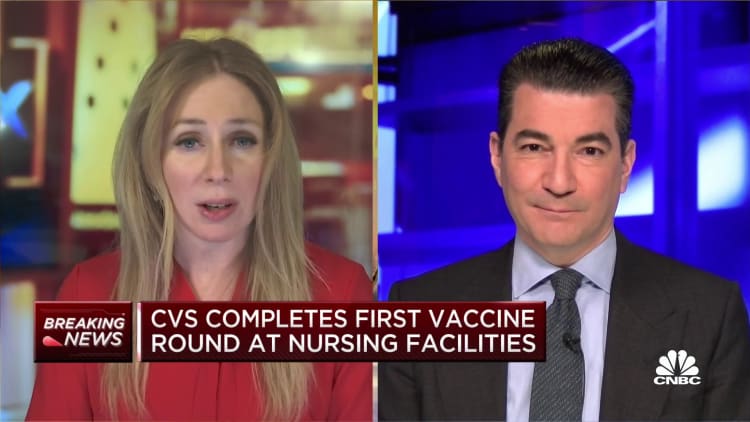It's a new year, which means new Medicare costs.
For Medicare's 63 million beneficiaries, certain parts of the program change yearly and can affect premiums, deductibles and other cost-sharing. While the upward adjustments don't necessarily involve huge dollar amounts, they can become challenging for some beneficiaries.
"Though the increases are small, we do see retirees worry over them," said Danielle Roberts, co-founder of insurance firm Boomer Benefits. "For folks living on just Social Security, increases of even just a few dollars are a concern."
Depending on the specifics of your coverage, there may be ways to reduce your costs. Here's what to know.
The basics
Basic Medicare consists of Part A (hospital coverage) and Part B (outpatient care). About 40% of beneficiaries choose to get those benefits delivered through Advantage Plans, which are offered by private insurers. Most of those plans also include Part D prescription drug coverage and extras such as dental or vision.
Other beneficiaries stick with basic Medicare and pair it with a stand-alone Part D prescription drug plan. Some also purchase a supplement plan — aka Medigap — which picks up some expenses in basic Medicare, such as coinsurance or copays.

Getting help with Parts A and B
Most Medicare beneficiaries pay no premium for Part A because they (or their spouse) have enough of a work history — at least 10 years — of paying into the program through payroll taxes to qualify for it premium-free.
If you don't meet the minimum requirement, though, monthly premiums for 2021 could be as much as $471 a month, depending on whether you've paid any taxes into the Medicare system at all. That maximum is up from $458 in 2020.
Also for Part A, if you have no additional coverage — 6.1 million beneficiaries did not, at last count — you'd pay a $1,484 Part A deductible if you're admitted to the hospital this year (up from $1,408 in 2020).
Medicare Part A deductible and coinsurance
| Type of cost-sharing | 2020 | 2021 |
|---|---|---|
| Inpatient hospital deductible | $1408 | $1484 |
| Daily coinsurance for 61st-90th day | $352 | $371 |
| Daily coinsurance lifetime reserve days | $704 | $742 |
| Skilled nursing facility coinsurance days 21 - 100 | $176 | $185.50 |
Source: Centers for Medicare & Medicaid Services
That deductible would cover the first 60 days per benefit period. Beyond that, daily copays of $371 (up from $352) apply through the 90th day. Anything above dips from "lifetime reserve" days at a daily rate of $742 (up from $704).
The standard Part B monthly premium for 2021 is $148.50, up from $144.60. The 2021 Part B deductible is $203, compared with $198 last year.
Once you meet that deductible, you typically pay 20% of covered services. Keep in mind that beneficiaries in Advantage Plans might pay a different amount through copays, and Medigap policies either fully or partially cover that coinsurance.

If you struggle to pay for coverage, you may qualify for a Medicare Savings Program, which is administered through state Medicaid offices and are generally available to beneficiaries with low income.
There are several versions of the program, each of which depends at least partly on your income. The options also come with limits on your available resources (i.e., savings).
Depending on which program you qualify for, your Part B premiums could be paid, as well as other out-of-pocket costs such as deductibles, coinsurance and copayments.
Extra charges for higher income
If your modified adjusted gross income exceeds $88,000 ($176,000 for married couples), based on your most recent tax return, you will pay more for Parts B and D premiums in 2021 due to a so-called income-related monthly adjustment amount, or IRMAA. These income thresholds compare to 2020 amounts of $87,000 for individuals and $174,000 for married couples.
For Part B, this means shelling out anywhere from $207.90 monthly to $504.90 in 2021 premiums. For Part D prescription drug coverage, the additional amounts range from $12.30 to $77.10. That's on top of any premium you pay, whether through a stand-alone plan (whose premiums vary) or via an Advantage Plan.
If your income has dropped and you're scheduled to pay IRMAAs, you can ask the Social Security Administration to reconsider, said Elizabeth Gavino, founder of Lewin & Gavino and an independent broker and general agent for Medicare plans.
"I have a client who was at the base level but just got hit with a large IRMAA since her 2019 income was significant," Gavino said. "She's appealing because now she has no income coming in."
Events that qualify as justification for reducing or eliminating the IRMAAs include marriage, death of a spouse, divorce, loss of pension or the fact that you stopped working or reduced your hours.
You'll also need to provide supporting documents to justify your appeal. Suitable proof may include a letter from your former employer (if you're no longer working) or something similar that shows evidence of reduced income. There's a form you can fill out or you can call the Social Security Administration for help.
Part D costs and help
Premiums for Part D prescription drug plans vary. The average for 2021 has slid to $30.50 from about $32.50 last year, according to the Centers for Medicare and Medicaid Services. However, if there's a deductible with your coverage, it can be up to $445 for 2021 (an increase from $435 last year).
For people with high drug costs, be aware the amount that Part D enrollees pay out of pocket before qualifying for "catastrophic coverage" is $6,550, up from $6,350 in 2020. In that phase of coverage, your share of prescription costs drops markedly.
Keep in mind that there is no out-of-pocket maximum for Part D coverage, whether you have a stand-alone plan or get benefits through an Advantage Plan.
More from Personal Finance:
IRS delays start of tax filing season to Feb. 12
Not all end-of-life decisions are covered in a will
Attacking holiday debt: These 8 strategies can help
If you meet certain income and resource limits, you might qualify for extra help paying for premiums, deductibles and copays or coinsurance related to prescription costs. If you qualify for a Medicare Savings Program, getting assistance for Part D coverage is typically automatic.
There are other ways to save, as well. You can use generics when possible to help lower costs or check to see if your state has a pharmaceutical assistance program that's available to Medicare beneficiaries, Gavino said.
Advantage Plans
While some Advantage Plans come with no monthly premium, the 2021 average is $21, down from just under $24 in 2020, according to government estimates. Either way, you must still pay your Part B premium.
However, depending where you live, you might find an Advantage Plan that provides a partial or full rebate of that monthly charge, said Boomer Benefits' Roberts.
Unlike basic Medicare, Advantage Plans come with annual out-of-pocket maximums. For 2021, that amount can be as high as $7,550 (up from $6,700 in 2020) for in-network coverage before the plan pays 100% of covered services (excluding your prescription drug costs, which do not count toward that cap). The combined in- and out-of-network maximum for 2021 is $11,300.
Generally speaking, the lower the premium, the more you'll pay in cost-sharing, experts say. And the specifics of that — whether out-of-pocket limit, deductibles, copays or coinsurance — differ from plan to plan.


